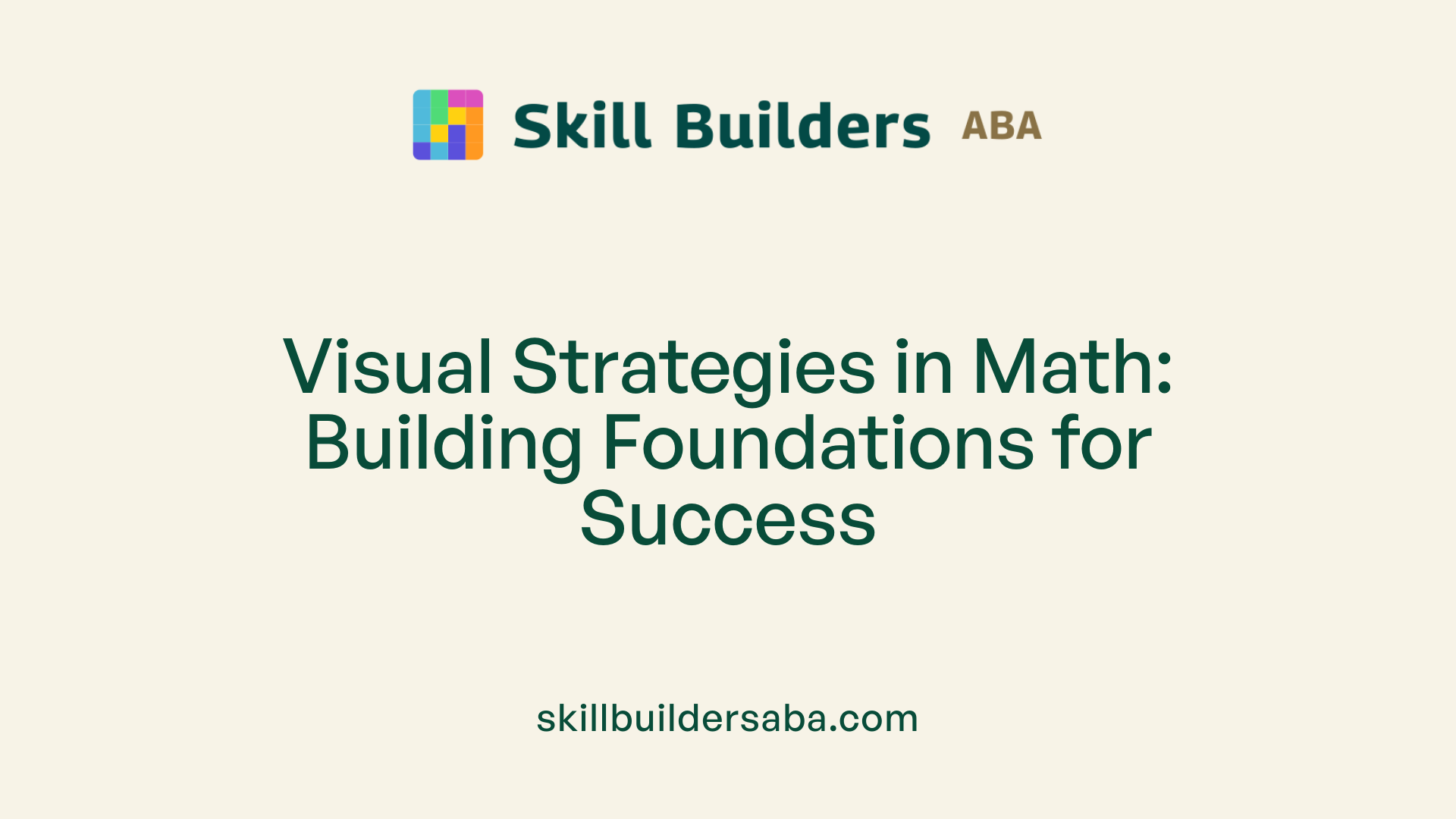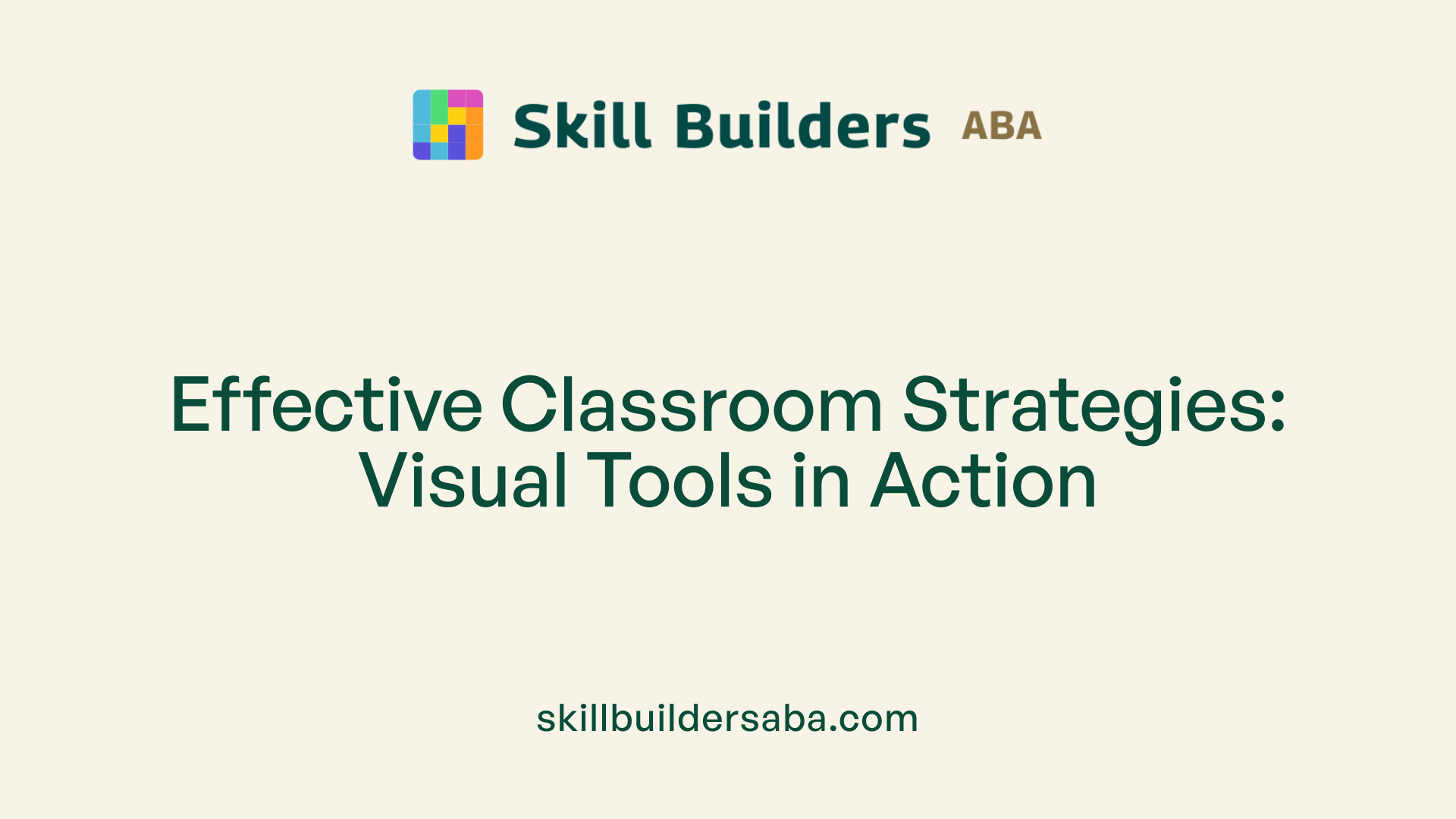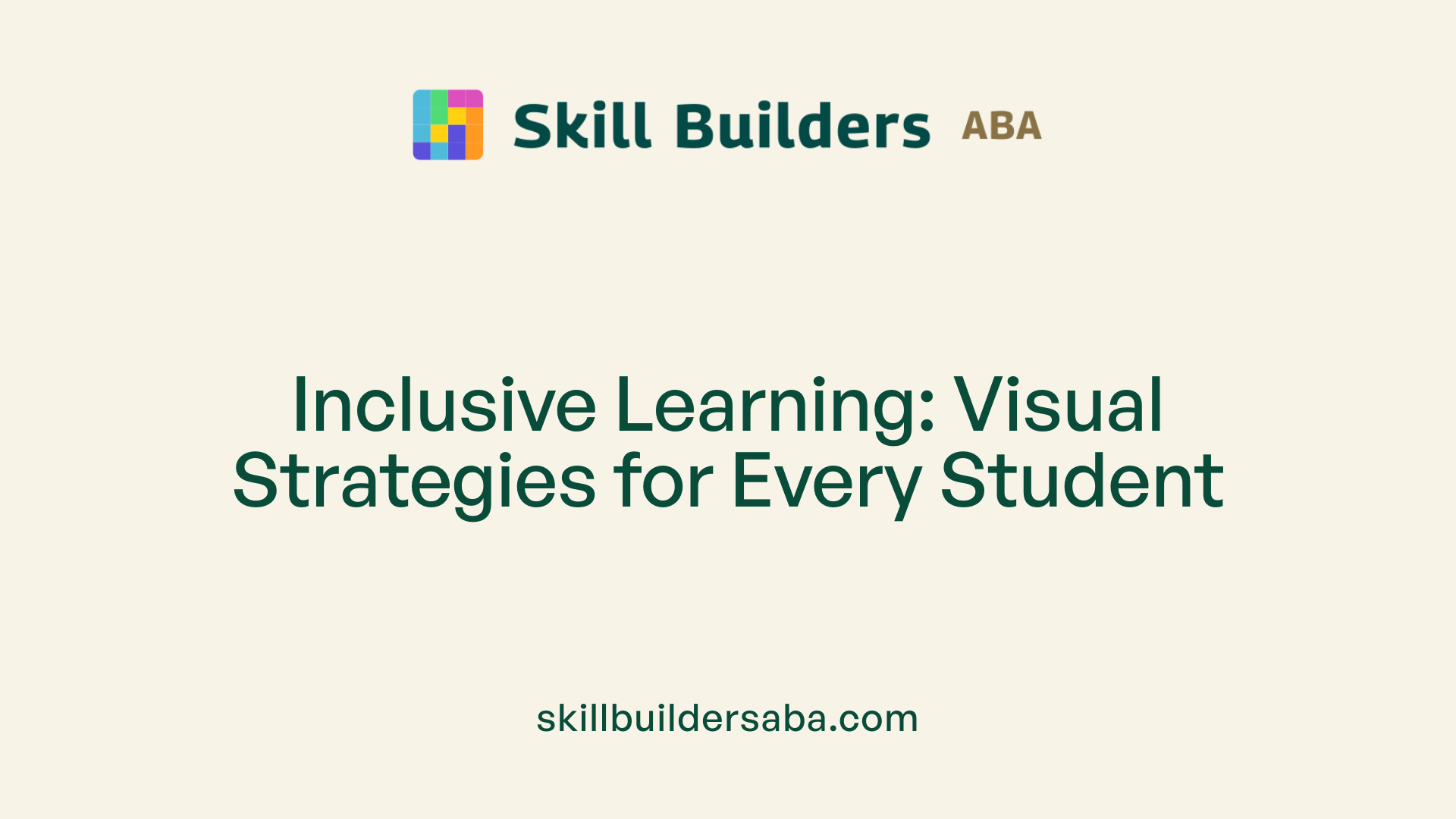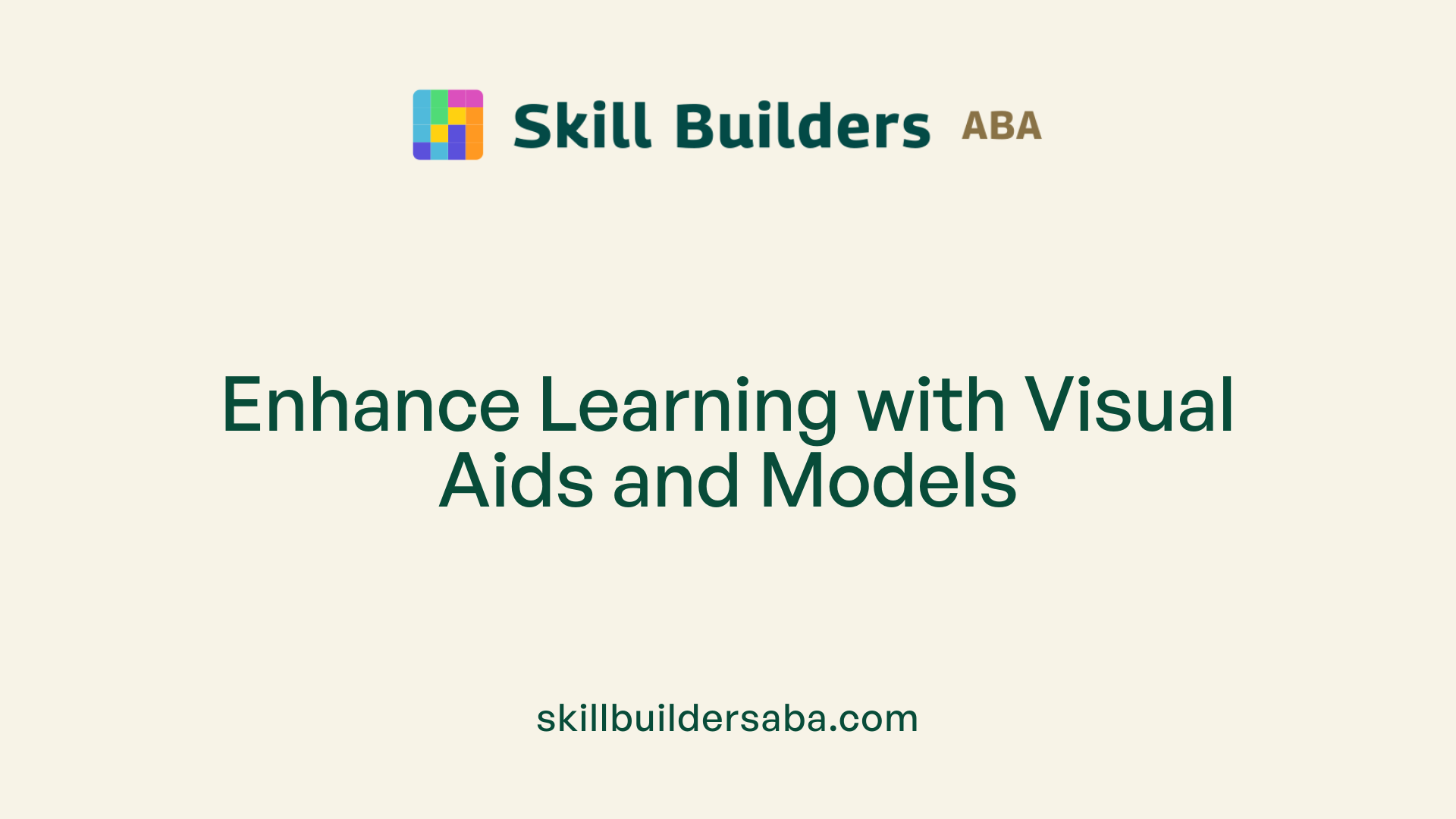
How to teach problem-solving using visual strategies
Visual Strategies Revolutionizing Problem-Solving Education
Transforming Math Instruction with Visual Aids
In modern mathematics education, visual strategies have become essential tools to enhance understanding, engagement, and problem-solving skills. By integrating visual representations into teaching practices, educators can support diverse learners, foster critical thinking, and improve overall conceptual comprehension. This article explores effective methods, evidence-based strategies, and valuable resources to help teachers implement visual tools for teaching problem-solving.
The Role of Visual Representations in Mathematical Problem-Solving

How can visual representations be used to teach problem-solving in mathematics?
Visual tools such as diagrams, charts, and models serve as essential aids in teaching mathematical problem-solving. These representations help students organize complex information, making it easier to interpret and analyze. For example, using slightly abstract visual representations like tables, number lines, and graphs enables students to see relationships between numbers and concepts more clearly.
Consistently employing visuals such as strip diagrams, number lines, and ten-frames across different problems and grade levels fosters independent problem-solving skills. These tools allow students to visualize operations like addition and subtraction. For example, physically 'jumping' through an addition problem on a number line helps build number sense and fluency.
Before jumping into equations, students can benefit from organizing data visually. Creating drawings, charts, or diagrams to break down the problem helps clarify goals and relevant details. This step ensures students focus on reasoning rather than rushing into calculation, which can lead to errors.
Research shows that the brain processes visual information significantly faster than text—up to 60,000 times quicker—and visuals can enhance learning outcomes by as much as 400%. When students create accurate visual representations early, they are more likely to solve problems correctly.
Teachers can incorporate visual aids systematically into instruction. Showing how to build and interpret concept maps, graphs, and diagrams promotes critical thinking and helps students make connections among ideas. Visual problem breakdowns make multi-step tasks more manageable, especially for children with executive function challenges.
Using manipulatives like counters, blocks, and beads offers concrete, tactile ways to explore and understand abstract concepts. When combined with explicit instruction, manipulatives can strengthen comprehension of operations such as addition, subtraction, multiplication, and division.
Explicit teaching on how to create and use visual representations is especially vital for students with difficulties in mathematics. Without guidance, they may not naturally develop accurate visuals, which are crucial for understanding.
Moreover, visual strategies not only strengthen conceptual grasp but also boost confidence and independent problem-solving, equipping students to approach math with a clearer understanding and greater motivation.
Visual tools support learning across different levels and needs.
| Visual Tool | Use Case | Benefits | Connection to Learning Goals |
|---|---|---|---|
| Number Lines | Jump through addition/subtraction | Builds number sense and fluency | Enhances understanding of arithmetic operations |
| Ten-frames & Dot Cards | Recognize and subitize | Improves number recognition | Develops quick quantity assessment |
| Concept Maps | Connect ideas and cause/effect | Encourages critical thinking | Facilitates understanding relationships |
| Graphs & Charts | Represent data visually | Clarifies relationships and trends | Strengthens data interpretation skills |
| Diagrams & Schematics | Break down complex problems | Makes multi-step problems manageable | Supports executive functioning and planning |
Incorporating visualization into instruction
Effective teaching involves not just providing visual tools but also guiding students explicitly on how to create and interpret them. This systematic approach helps develop a deep understanding of mathematical concepts, especially for learners with special needs.
The Concrete-Representational-Abstract (CRA) framework emphasizes transitioning from physical objects to visual models and then to equations, fostering a comprehensive grasp. Visually based instruction, with modeling and think-aloud routines, allows teachers to demonstrate reasoning processes, making abstract ideas more accessible.
In summary, visual representations play a crucial role in mathematics education by enhancing understanding, encouraging student independence, and improving problem-solving accuracy. Using diverse visual tools thoughtfully connects students’ visual and abstract thinking, leading to better learning outcomes.
Implementing Visual Tools in Classroom Practice

Introduction of visual tools such as number lines, strip diagrams, tables, and concept maps
Using visual representations is a powerful way to support students’ understanding of mathematics and problem-solving. Number lines allow children to physically or mentally 'jump' through addition and subtraction problems, helping them develop number sense and fluency. Strip diagrams illustrate parts of a problem clearly, enabling students to visualize relationships and break down complex scenarios. Tables help organize data systematically, making patterns and connections easier to see. Concept maps visually show how ideas and information relate, fostering critical thinking. Incorporating these tools early helps students organize information, distinguish relevant from irrelevant details, and clarify their goals. They provide concrete supports that make abstract concepts more accessible.
Tailoring visual aids to specific problem types and student needs
Different problems require different visual strategies. For example, number lines are excellent for understanding number operations, while ten-frames and dot patterns aid in developing recognition and subitizing skills—instantly recognizing quantities without counting. Visual tools are especially valuable for neurodivergent children, offering concrete representations that support understanding. Teachers should select visuals based on the problem’s nature and the student’s developmental level or needs. For instance, diagrams and concept maps are useful for multi-step word problems that demand executive functioning skills, helping children break down and organize their reasoning process.
The importance of explicit instruction and modeling in using visuals
Simply providing visual tools is not enough—students need explicit instruction on how to create and interpret them. Modeling this process through think-alouds demonstrates reasoning strategies, making the internal thought process visible. When teachers verbalize their interpretation of visuals, students learn to approach problems step-by-step, increasing confidence and independence. Systematic teaching of visual strategies, including how to draw diagrams or use manipulatives effectively, is crucial for students who struggle with math. Studies show that when visual representations are modeled and combined with structured prompts, students respond more accurately and develop stronger problem-solving skills.
| Strategy/Tool | Application | Student Benefit | Additional Notes |
|---|---|---|---|
| Number Lines | Jump through addition/subtraction | Builds number sense | Can be physical or paper-based |
| Ten-frames & Dot Cards | Recognize quantities, subitizing | Improves quick recognition | Especially useful for early learners |
| Concept Maps | Connect ideas and cause-effect | Enhances critical thinking | Helpful in understanding relationships |
| Manipulatives | Tactile interaction with abstract numbers | Visualizes operations concretely | Includes counters, blocks, beads |
| Graphic Organizers | Organize ideas, problem steps | Clarifies concepts | Examples: Venn diagrams, T-charts |
| Visual Problem Breakdown | Drawings, charts, diagrams | Manage multi-step problems | Supports executive functioning |
Research highlights that consistent use of these visual tools, combined with explicit instruction and modeling, significantly improves students’ ability to understand and solve mathematical problems. Visual teaching strategies leverage the brain’s ability to process images faster and retain information longer, making them essential in diverse classroom settings.
Supporting Diverse Learners with Visual Strategies

Are there evidence-based visual strategies for teaching problem-solving to diverse learners?
Research indicates that visual supports are highly effective in teaching problem-solving skills to students with diverse learning needs. Through using visual representations such as graphic organizers, diagrams, number lines, and charts, teachers can help students better understand complex mathematical concepts. These visual tools help clarify relationships, reduce cognitive load, and improve the ability to organize and process information.
For example, visual representations like schematic diagrams and concept maps demonstrate connections between ideas and help students see relationships. Number lines, whether physical or paper-based, assist children in 'jumping' through addition or subtraction, helping to build number sense and fluency. Visual strategies also include manipulatives—tangible objects like counters, beads, and blocks—that enable children to grasp abstract concepts in a concrete way.
Explicit instruction on how to create and effectively use visual tools, such as the Concrete-Representational-Abstract (CRA) framework, enhances mathematical understanding. This approach systematically guides students from hands-on activities to more abstract reasoning.
Moreover, visual supports extend beyond mathematics. Visual schedules, social stories, and multimedia tools help students with developmental challenges—such as neurodivergent children—by facilitating routines, communication, and independence. These strategies are backed by scientific evidence showing their capacity to enhance problem-solving skills and overall learning.
Teachers can also use visual methods to facilitate group discussions and encourage students to demonstrate understanding through sharing visual work, whether via PowerPoint slides, diagrams, or annotated visuals. Digital media, like engaging videos, connect learning to real-world or pop culture contexts, making lessons more relevant and interesting.
Overall, a combination of visual representations, manipulatives, explicit instruction, and multimedia supports offers a comprehensive approach. When applied systematically, these evidence-based strategies make mathematics more accessible and empower students with diverse needs to develop their problem-solving abilities.
| Visual Strategy | Description | Benefits |
|---|---|---|
| Graphic Organizers | Charts and webs that structure ideas and show relationships | Clarifies concepts, enhances organization, boosts critical thinking |
| Number Lines | Visual lines to model addition, subtraction, and number sense | Builds fluency, understanding of magnitude, supports mental math |
| Manipulatives | Physical objects like counters, blocks, beads | Develops concrete understanding, connects abstract to tangible |
| Visual Schedules & Stories | Visual routines and social stories for behavioral and communication skills | Facilitates independence, routine adherence, social understanding |
| Multimedia & Videos | Engaging visual content to illustrate concepts | Improves attention, reinforces learning, makes abstract ideas concrete |
| Concept Maps | Diagrams showing how ideas and concepts connect | Promotes deeper understanding, critical thinking, and idea synthesis |
Adopting these strategies can significantly enhance problem-solving skills among students with different learning styles and challenges, ensuring more equitable educational outcomes.
Incorporating Visual Aids and Models into Instruction
 Using visual representations such as sketches, flowcharts, diagrams, and manipulatives is a powerful way to make abstract concepts more tangible for students. For example, teachers can guide students to draw problem-solving steps or create physical models like blocks or counters to illustrate mathematical operations. These concrete tools help students grasp ideas more clearly and reduce confusion.
Using visual representations such as sketches, flowcharts, diagrams, and manipulatives is a powerful way to make abstract concepts more tangible for students. For example, teachers can guide students to draw problem-solving steps or create physical models like blocks or counters to illustrate mathematical operations. These concrete tools help students grasp ideas more clearly and reduce confusion.
Integrating multimedia and interactive technology enhances this visual approach further. Virtual reality environments, educational apps, and engaging videos can bring lessons to life and allow students to explore concepts actively. This multimodal strategy caters to a variety of learning styles, especially benefiting visual learners who process information faster through images and motion.
Aligning these visual strategies with curriculum standards ensures that learning remains focused and effective. Teachers can design activities where students create mind maps, charts, or graphs demonstrating their understanding, promoting active participation. For instance, when tackling multi-step problems, students can visually break down each step using diagrams or flowcharts.
Research shows that visuals help students develop problem-solving skills more effectively. Systematic instruction on how to create and interpret visual representations, including using digital media, rewards their use. Visual tools cultivate critical thinking by showcasing relationships, cause-and-effect, or similarities and differences among ideas.
In summary, combining traditional visual aids like drawings and manipulatives with advanced technological tools and aligning these with curriculum goals fosters a more engaging, comprehensive, and effective learning environment for all students.
Resources to Enhance Visual Problem-Solving Instruction
 Supporting effective problem-solving in the classroom can be significantly enhanced through various visual resources and tools. These visual aids help organize information, clarify steps, and foster independent thinking among students of different ages and learning needs.
Supporting effective problem-solving in the classroom can be significantly enhanced through various visual resources and tools. These visual aids help organize information, clarify steps, and foster independent thinking among students of different ages and learning needs.
Visual aids like posters, diagrams, and social stories are foundational elements. Posters can display step-by-step processes or visual cues that aid memory and understanding. Diagrams, such as flowcharts or concept maps, visually represent relationships and sequences, making abstract ideas tangible. Social stories provide relatable scenarios with visual supports to teach social and problem-solving skills, especially for children with autism spectrum disorder.
Digital tools and multimedia supports expand the possibilities with interactive visuals. PowerPoint slides, videos, and digital graphic organizers enable teachers to present complex information dynamically and attractively. High-quality videos particularly communicate strategies and scenarios that engage students actively, helping them internalize problem-solving steps effectively.
Templates and visual schedules are vital for classroom and social-emotional learning. Visual schedules outline daily activities or problem-solving steps in a visual format, reducing anxiety and increasing independence. Templates for visual choice boards or social stories guide children to articulate their feelings, recognize problems, and explore solutions systematically.
Additional resources include classroom photographs, teacher tips, and multimedia supports encouraging social interaction and collaborative problem-solving. These materials help students recognize real-world applications of abstract concepts, develop social-emotional skills, and foster teamwork through visually structured activities.
Emphasizing the use of visuals not only makes learning more accessible but also accelerates understanding and retention. Studies show that visuals are processed 60,000 times faster than text and can improve learning outcomes by up to 400%. When integrated thoughtfully into instruction, these tools provide a universal language that supports diverse learners, including those with learning disabilities, neurodivergent children, and students at different developmental stages.
Summary table of visual resources for teaching problem-solving:
| Resource Type | Examples | Benefits |
|---|---|---|
| Posters and Diagrams | Step-by-step instructions, flowcharts | Clarifies processes, enhances memory |
| Digital Media | Videos, interactive diagrams | Engages students, models strategies effectively |
| Templates and Schedules | Visual schedules, choice boards | Increases independence and emotional regulation |
| Classroom Photos & Tips | Real-world examples, teaching strategies | Connects concepts to everyday life, improves social skills |
Using these visual resources systematically provides powerful support for problem-solving education, making abstract ideas concrete and accessible for all learners.
The Brain’s Rapid Processing of Visual Information and Its Impact in Education

How does visual imagining support complex problem-solving?
Research shows that teaching children to use visualizing strategies, like visual imagining, significantly boosts their ability to handle complex problems. When students are encouraged and trained to create mental images of problems, they gain a clearer understanding of the relationships and structures involved. This process helps them develop responses that are often considered advanced or verbally demanding.
The use of visual imagining serves as a bridge to better problem analysis. Systematic modeling and prompting students to visualize their solutions provide a critical mediation step, making abstract or challenging tasks more concrete. This approach taps into the brain’s incredible capacity to process visuals rapidly—up to 60,000 times faster than text—making learning more efficient.
By internalizing visual images of problems and solutions, students can work through steps more independently, leading to improved confidence and problem-solving skills. Overall, integrating visual imagining into teaching strategies harnesses the brain’s natural strengths and promotes deeper understanding of complex mathematical and reasoning challenges.
Harnessing Visual Strategies for Future-Ready Math Education
The integration of visual strategies in teaching problem-solving is transforming mathematics education by making abstract concepts tangible and accessible. From using foundational tools like number lines and diagrams to employing sophisticated graphic organizers and multimedia resources, educators have a rich arsenal to support learners of diverse backgrounds. Evidence shows that explicit instruction, model demonstration, and the systematic development of visual representations significantly improve students' problem-solving accuracy, independence, and confidence. Embracing these visual strategies equips future generations with the critical thinking skills necessary for success in an increasingly visual and data-driven world, ensuring that teaching methods not only meet current educational standards but also prepare students for lifelong mathematical reasoning.
References
- Effective Problem-Solving Instruction, Part 1: Visual ...
- Why Visual Strategies Matter for Neurodivergent Learners
- Visual Teaching Strategies to Improve Learning | Lucidspark
- Page 5: Visual Representations - IRIS Center
- TRAINING PRESCHOOL CHILDREN TO USE VISUAL ...
- Effective Problem-Solving Instruction, Part 1: Visual ...
- Visual Teaching Strategies to Improve Learning | Lucidspark
- Problem Solving Strategies Visual
Reach Out Today
Learn more about how we can support your child’s growth and development. Contact us to discuss our services and availability in your area.
.svg)